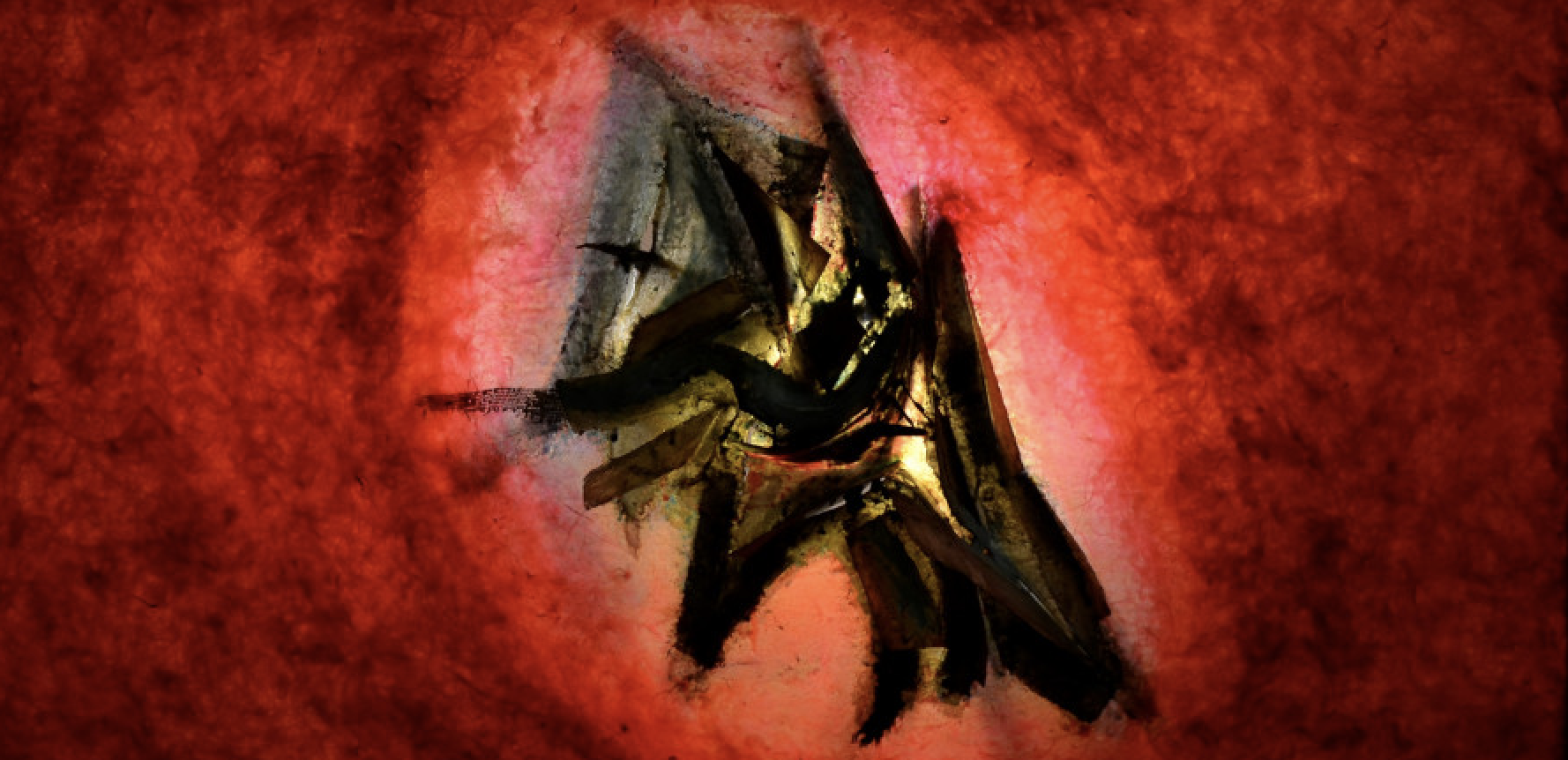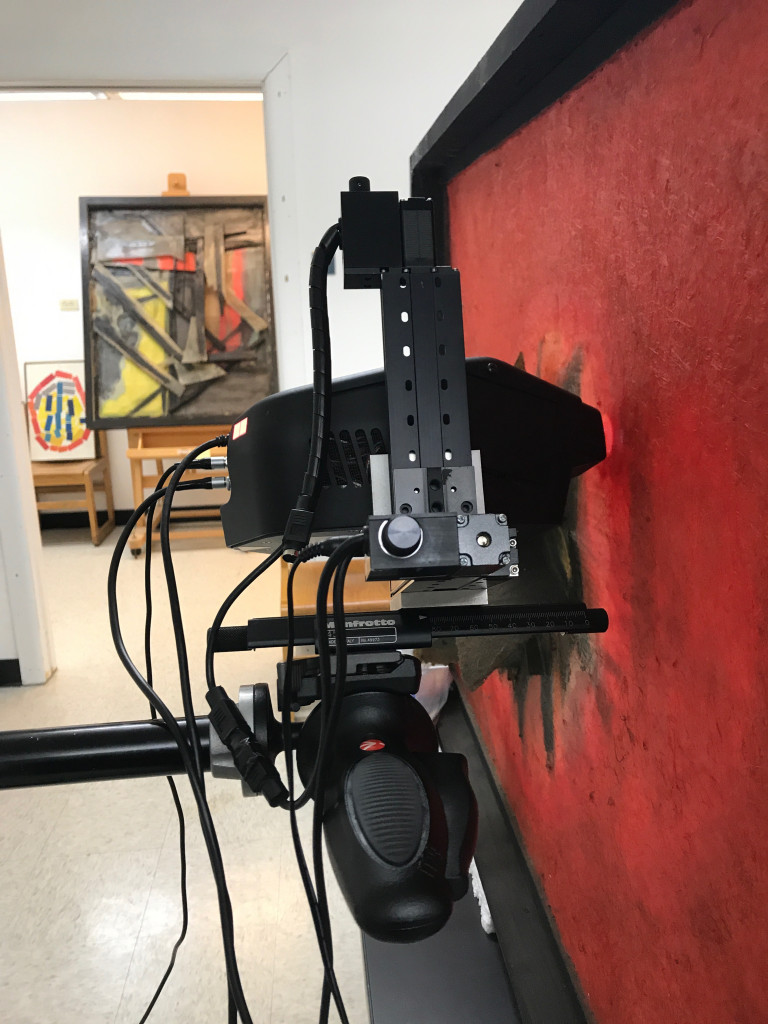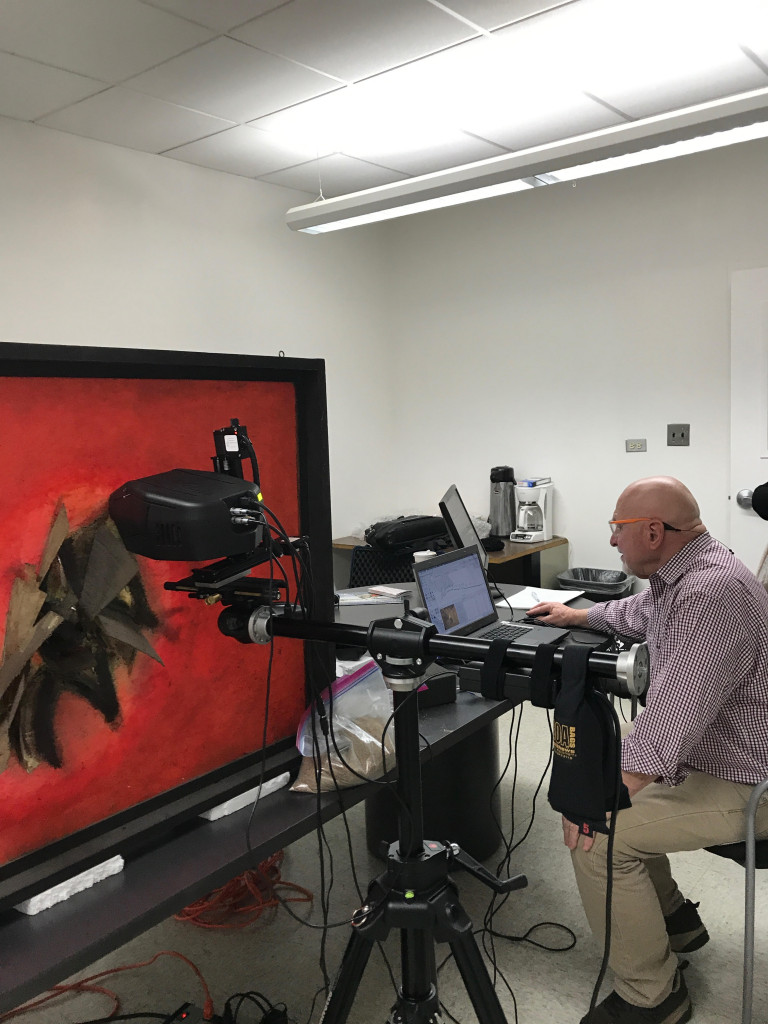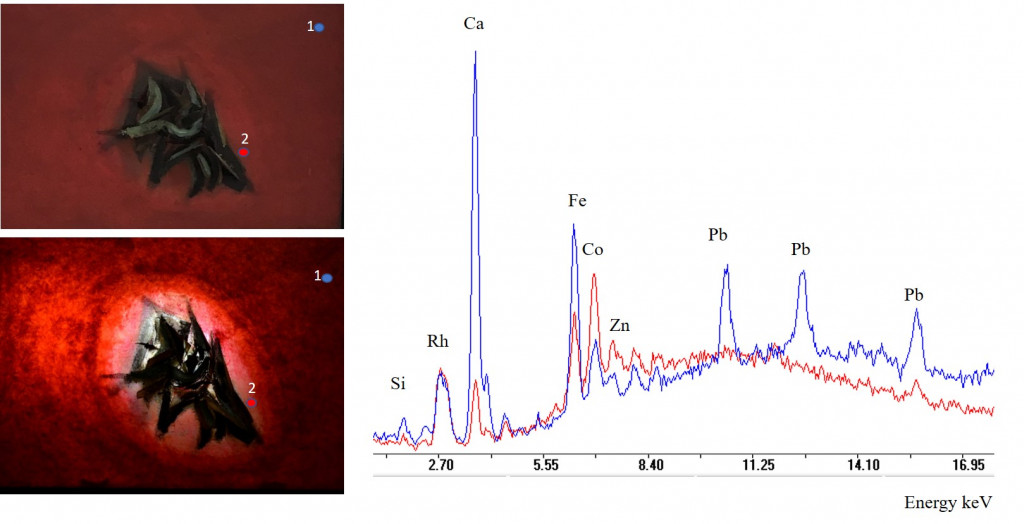
Sirovich Family Resident – Renato Miracco
STEAMplant Faculty Members – Eleonora Del Federico & Lisa A. Banner
STEAMplant Professional Collaborators – Sarah Nunberg
Licio Isolani was an Italian-borne sculptor, a long-time associate professor at Pratt Institute, and a pioneer in cross-disciplinary art as a member of the 1960s group Experiments in Art and Technology (founded by Robert Rauschenberg and engineer Billy Kluver of Bell Labs). Collaborating with Dr. Renato Miracco (an international expert on 20th century Italian art), Pratt Institute art historian and curator Dr. Lisa Banner, and chemist Eleonora Del Federico, conservator Sarah Nunberg analyzed the contents of Isolani’s notebooks and artworks through the lens of analytical instrumentation such as X-ray fluorescence and infrared spectroscopy.
The aim of this study was to learn about the nature of the colorants used by the artist on two of his red fiberglass sculptures. The main difference between them is the opacity of their red background, however, once illuminated they both reveal areas of high opacity and areas of high transparency. In order to further understand how the artist achieved these optical effects, the analytical technique X-Ray-Fluorescence (XRF) was used. XRF is an elemental spectroscopy technique that gives information about the atomic composition of materials. The method entails irradiating an area between 1–5 mm squared of the artwork at a time with X-rays. Subsequent emission by the atoms in this area is then detected and transformed into an X-ray spectrum, which gives the elemental composition of the area studied. This information was then used to determine the possible pigments present.


The analysis of these two sculptures revealed that the artist used pigments containing lead and cobalt on the areas of high opacity, whereas the transparent areas lack these elements. An ongoing study using Raman spectroscopy, a technique that gives molecular information of materials, has suggested that the artist used synthetic red dyes on the transparent areas. Isolani was interested in playing with light and color, transparency vs. opacity in his artworks as a metaphor of open vs. closed doors. This study allows us to better understand his method of execution and the materials he used in order to achieve his intention.

Check out a documentary on Licio Isolani here.